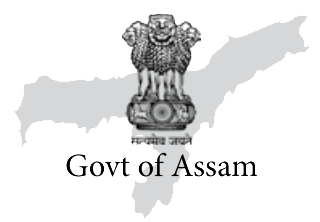India is a confluence of various cultures, traditions, beliefs and values and the variations have always been driving force to unite our beautiful country. The slogan “Unity in Diversity’ has stood universal over centuries and one of the prime motivations in this has been the cooperative mindset of the people of this country.
India as a nation has always relied on cooperation to achieve major milestones. In fact, cooperation has over a hundred years of formal history in India. The Cooperative Movement emerged out of the stress felt by Indian farmers during the last quarter of the 19th century. An overwhelming majority in the country was dependent on agriculture for their livelihood and rigidity in the collection of land revenue and rainfall uncertainty ensured that the farmers approached money lenders for financial help. The humiliation felt by the farmers in the hands of the moneylenders served the need for an alternative agency for agricultural credit which resulted in the Cooperative Societies Act, passed in 1904. Later, in 1912, the Cooperative Societies Act was enacted removing some of the shortcomings of the 1904 Act and paved the way for taking non-credit cooperative societies, too, under its ambit.
Post-Independence, cooperatives flourished at a massive pace. Sectors like Banking, Agriculture and Housing developed under the cooperative umbrella giving autonomy to the members in their management and an opportunity to share ownership of the institution. However, cooperatives are under State subject in the Indian Constitution and therefore cooperatives law and its implementation widely differ from State to State.
In July 2021, a historic decision was taken by the present Government under the leadership of Hon’ble Prime Minister Sri Narendra Modi to form the Union Ministry of Cooperation. Moreover, no less than the Home Minister, Sri Amit Shah, took charge as the Minister driving home the commitment of the Modi Government of “Sahkar se samriddhi”‘ (transl. Prosperity through Cooperation). The Ministry provides a separate administrative, legal and policy framework for strengthening the cooperative movement in the country. It works in strengthening co-operatives at the grassroots, working to streamline processes for ‘Ease of Doing Business’ for co-operatives and enabling the development of Multi-State Co-operatives (MSCS).
With the introduction of this Ministry, rural India is being transformed at a fast pace. The nerve centre of rural economy, the PACs are being computerised and their business activities are being diversified in various sectors like health, fertilizers, fuel, export, organics, etc., giving ample opportunity to the members and residents of the area of operation to foray into sectors of their choice with support from the PACs.
There are more than 10,000 cooperative societies in Assam across 33 districts covering almost all the sectors and sub-sectors of the economy, pursuing various income generating activities resulting in decent job creation and employment opportunities. Assam is slowly moving towards becoming a self-sufficient State in terms of milk and its products. A major credit of the recent boom in white revolution in Assam can be attributed to cooperative societies. Societies like West Assam Milk Producers’ Cooperative Union Ltd. (PURABI) and Sitajakhala Dugdha Utpadak Samabai Samiti Ltd. have been the torchbearers in the revolution.
A number of women cooperative societies under the banner of Area Level Federations consisting of Self Help Groups as members are functioning in Assam under the guidance of Central and State Livelihood Missions. These societies are the epitome of self-reliance and women empowerment in the State. Their contribution in the recent demand of home-made masks during the Covid pandemic is just one example of the noteworthiness of their products and services. The availability of microcredit to these institutions has resulted in womenfolk undertaking range of activities such as food products, animal rearing, handloom and handicraft, pottery, smithy, etc. In 2018, the country had 8.54 lakh cooperatives in 739 districts. Maharashtra alone had nearly 25% of them with over 2 lakh cooperatives followed by Gujarat with 77,000. Andhra Pradesh, Telengana and Karnataka following suit. No wonder, all these States are clocking historic growth in GSDP, and prosperity as cooperatives have paved the way for the masses to earn a decent and respectable livelihood and, and contribute towards the institution in specific and the society, at large.
‘Self-reliance’ and ‘Self Confidence’ are the mantra for boosting the economy in the post-Covid-19 India. The future of Assam as envisaged in strengthening the cooperative sector of the economy is bright. However, there is a need to retrofit the existing infrastructure and create new ones. Cooperatives can play a crucial and productive role for the creation of collectively owned assets and resources. Time has come when the need to promote local products and services has emerged and there cannot be any other organisation established under a legal framework other than the cooperative societies in which poor people can pool their limited capital and fund to pursue various economic activities resulting in optimal usage as well as trading of locally available resources and services. Strong cooperatives are the means to achieve the dream for a strong rural economy.
The writer is Minister, Cooperation, others, Government of Assam.













